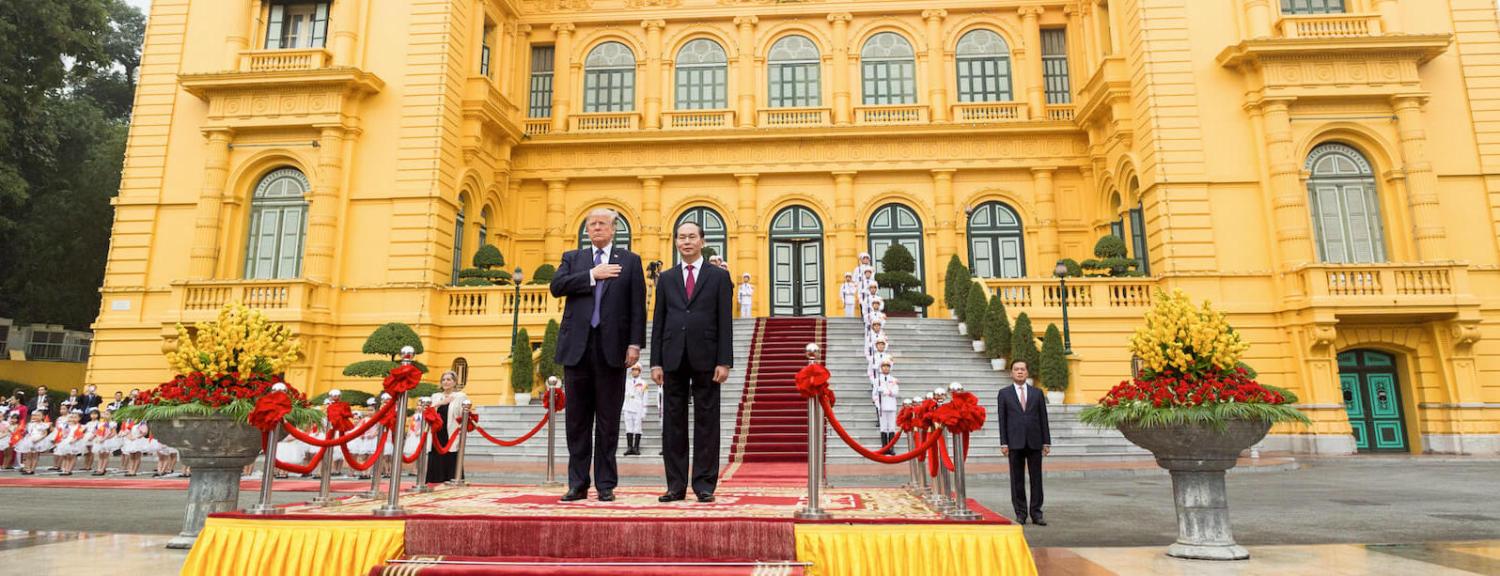The news is in. US President Donald Trump will meet North Korean Chairman Kim Jong-un for the second time on February 27-28. Instead of Singapore, this time Vietnam will play host.
Although there are many concerns regarding the prospect of success for the second summit and North Korea’s continued pursuit of a more survivable nuclear arsenal as a hedge against a US change of heart, the venue of the summit also makes for a curious backdrop. Vietnam, as an example of a historical failure of US engagement in Asia and as a model of a successful economic reform program, is a one-of-a-kind host for the second summit.
I am a long-time Korea watcher, and I have been opposed to the second summit since the beginning. However, as a Vietnamese, I have been rooting for my country to host it because of the local angle to the event’s significance: Vietnam has been held up as a model for possible North Korean reforms. The Vietnamese perspective of the second summit helps to draw a parallel between Vietnam’s past and North Korea’s future.
US President Donald Trump announces a second summit with North Korean leader Kim Jong-un in Vietnam in late February#SOTU https://t.co/zFC2dSynzQ pic.twitter.com/I8lMxYWIoW
— BBC Breaking News (@BBCBreaking) February 6, 2019
North Korea of 2019 is not too different from Vietnam of 1989. The two countries were both under United Nations sanctions, in the case of North Korea, for developing nuclear weapons, and in the case of Vietnam, for occupying a foreign country. And Pyongyang is exploring new ways to reform their command economy as Hanoi did 30 years ago. During the 6th National Congress of the Communist Party of Vietnam in 1986, the Vietnamese government laid out its Doi Moi policy to recognise the private sector, decentralise economic decision-making processes, and open its market to foreign investors. In the following three decades, Vietnam was among the world’s top growing economies and succeeded in attracting investors from former Cold War-era enemies South Korea, Japan, and the United States.
Throughout the past year, Kim Jong-un also signalled his determination to improve North Korea’s economy when he introduced the “new strategic line” and shifted the country’s focus to the economy. In November 2018, North Korea Foreign Minister Ri Yong-ho visited Vietnam to learn about the country’s socio-economic development model.
To realise these ambitions, Kim needs to make the same kind of commitment to the international community that Vietnam made in the late 1980s.
In his 2019 New Year Address, Kim emphasised the need to generate more energy in order to provide enough fuel for “different sectors of the national economy,” and to reopen the Kaesong Industrial Complex and Mount Kumgang Resort to welcome South Korean investments. Moreover, North Korea is building up its infrastructure for the moribund tourism industry, a sign that Pyongyang seeks to attract more foreign visitors, enabled by the success of Kim’s engagement with the United States and South Korea. Kim clearly hopes to establish more special economic zones (SEZs) similar to Kaesong, in which he could benefit from foreign capital while preventing ordinary North Koreans from peeking inside these zones.
However, to realise these ambitions, Kim needs to make the same kind of commitment to the international community that Vietnam made in the late 1980s. Vietnam opened its economy to foreign investment in 1986; however, it was only after Hanoi withdrew its troops from Cambodia in 1989 that it was able to welcome investments from South Korea, Australia, Japan, and the United States.
If Kim wants to fully follow Vietnam’s footsteps, he will also have to commit to freeze his nuclear program in the short term and to dismantle it in the long term. In the absence of such a pledge, any SEZs would fail to appeal to foreign investors with the possible exception of Chinese and Russians backers.
In this context, the second Trump-Kim summit in Vietnam is even more important than the June 2018 Singapore summit.
There is growing pressure on Trump to persuade Kim to declare all of his nuclear and missile programs and to secure a verification mechanism to prevent a collapse of the denuclearisation process. For his part, Kim has promised to dismantle North Korea’s plutonium and uranium enrichment facilities at Yongbyon and elsewhere. If Trump and Kim can agree on a denuclearisation roadmap in Vietnam, such a feat would bear striking resemblance to Vietnam’s decision to withdraw from Cambodia and to transform from an international pariah to a normal country.
Nevertheless, as we hope for Pyongyang’s sincerity, the symbol of Vietnam as a failure of US commitment to its ally South Vietnam should counsel caution. As Trump is demanding South Korea pay more for the presence of US troops, fears are growing that the US-South Korea alliance will encounter impediments in coming years as inter-Korean relations continue to warm. Moreover, there is always a possibility that Trump may abandon the US alliance with South Korea in exchange for a nuclear deal with Kim.
As the date and location for the second summit are now set, the United States and North Korea can use this opportunity to improve their relations and strike a deal that guarantees North Korea both prosperity and security. Though it would have seemed unlikely at the time, Vietnam achieved the same thing with the United States and the results have so far been positive. Regardless of what may happen at the end of February, both the Korea watcher and the Vietnamese in me wish the summit a huge success.


